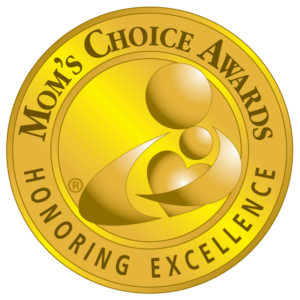
Published on:
In response to a changing labor market, we have seen a growing emphasis on company initiatives designed to foster a more supportive work environment for all employees. Diversity, equity, and inclusion are buzzwords for managers and HR professionals—in fact, the abbreviated “D, E, and I” (D/E/I) is all you need to reference your company’s efforts to be inclusive of everyone.
As we embrace D/E/I initiatives like never before, I am compelled to raise my voice on behalf of working family caregivers. This significant segment of the workforce is often neglected in company D/E/I efforts. However, if we truly wish to create a supportive work environment for all, then working caregivers must become a focus for employers.
Here are five reasons why your company’s D/E/I initiatives should include family caregivers.
- There is an enormous and growing number of working family caregivers. It is estimated that 53 million (more than one in five) adults in the U.S. provided unpaid, informal care to a loved one over the past year. More than sixty percent of these (about 32.5 million) were working during the same period of time.[1]
- Working family caregivers come from all the social categories. Caregiving activity is prevalent among all socially categorized groups. Working caregivers come from all walks of life, regardless of race, ethnicity, gender identity, income/education levels, religion, generation, family composition, etc. [2] Moreover, family caregiving responsibilities disproportionately fall upon women and people of color.[3]
- Working family caregivers have unique, unmet needs. The stress of managing both work and family caregiving responsibilities simultaneously can produce significant physical, mental, and emotional challenges.[4] A majority of employed family caregivers report work-related difficulties in trying to care for a loved one and keep their job.[5]
- Working family caregivers tend to be quiet about their needs. Despite the physical, mental, and emotional challenges cited above, working caregivers are not the greatest at self-advocacy. Among the most telling statistics is this: about 44% of employed caregivers have not even told their work supervisor about their family caregiving responsibilities at home.[6]
- Your company’s commitment to support working caregivers will help you recruit and retain talented employees who may otherwise choose not to work for you. With today’s environment of worker shortages and growing caregiving demands, Harvard Business School recently made the case for a targeted HR focus on working caregivers, calling it a “talent management” imperative.[7]
In light of the above, it’s time for managers and HR professionals to develop D/E/I initiatives that better support working caregivers. Here are a few suggestions from my book, When Caregiving Calls: Guidance as You Care for a Parent, Spouse, or Aging Relative, for organizational leaders who wish to foster such an inclusive and more equitable workplace:
- Create policies that permit accommodations for employees who are family caregivers, such as flextime and flexplace arrangements.
- Make counseling services available to employees who juggle family caregiving responsibilities.
- Start a caregiver support group for employees.
- Help employees gain access to professional services that meet the needs of caregivers, including home care, assisted living, legal and financial help, and geriatric medicine.
- Facilitate training opportunities for employees to develop their capacity to care for aging and disabled loved ones.
- Educate managers on caregiver discrimination (yes, that’s a strong word) so that employees are not presumed to be less committed to work simply because they care for a loved one in need at home.
In closing, I’d like to mention that I have personally worked with companies such as Quest Diagnostics, McKesson, and Hallmark in connection with their commendable efforts to address the needs of employees with family caregiving responsibilities. It’s gratifying to observe how these companies understand that investing in family caregivers is not only a business necessity but also the right thing to do.
________________________________________________________________________________________
Dr. Blight’s signature presentation, “Caregivers in Corporations,” is about the struggle to straddle work and caregiving responsibilities simultaneously. If you would like to engage Dr. Blight in your company’s efforts to develop D/E/I initiatives for your working caregivers, please contact us.
[1] AARP and National Alliance for Caregiving. Caregiving in the United States 2020. Washington, DC: AARP. May 2020.
[2] AARP and National Alliance for Caregiving. Caregiving in the United States 2020. Washington, DC: AARP. May 2020.
[3] The White House. A Proclamation on National Family Caregivers Month, 2022. Washington, DC: The White House. October 2022.
[4] Rosalynn Carter Institute for Caregivers. Working While Caring: A National Survey of Caregiver Stress in the U.S. Workforce. Americus, GA: Rosalynn Carter Institute for Caregivers. September 2021.
[5] Family Caregiver Alliance. Caregiver Statistics: Work and Caregiving. San Francisco, CA: Family Caregiver Alliance. November 2022.
[6] Family Caregiver Alliance. Caregiver Statistics: Work and Caregiving. San Francisco, CA: Family Caregiver Alliance. November 2022.
[7] Harvard Business School. The Caring Company. Boston, MA: Harvard Business School. January 2019.
Posted in Family Caregiving, Organizational Caregiving




